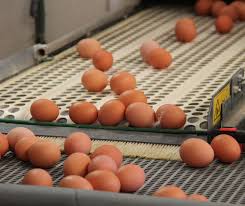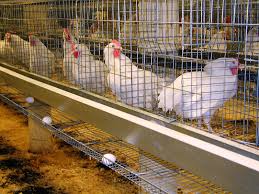The following is a summary of management routines for laying hens:
1. Provide optimum space per bird. A space requirement of .186m (2sq ft) is adequate at point of lay
2. Introduce the pullets to layer’s mash preferably after the first eggs have been dropped (a production level of 2-5%)
3. Inspect birds daily for any signs of disease or abnormal behavior
4. Maintain accurate records of feed consumption, egg production and disease control measures. A sharp drop in feed consumption is often the first indicator of a pending disease outbreak or response to a major environmental stress.
5. Under hot weather conditions, provide plenty of cool drinking water, if possible, use artificial lights in the early mornings (from about 3:00 am) to stimulate feed consumption during the cooler times of the day.
6. Always enter the house courteously, rude entrance can create hysteria
7. Regularly cull unproductive birds. Removal of such hens creates more space for the remaining birds and saves on the feed cost that would have been expended on them.
These birds may also fetch a better price at the time of culling than if they were left to be older before sale. All layers should be sold off after about one year of lay unless they are still economically productive
Read Also: Proper Pullets Management Practices for Better Performance
8. At the first signs of disease or any other problem, set up the preventive or corrective measures promptly
9. Prevent feed wastage.
1. Egg Collection and Handling

The chicken egg is one of God’s most wonderful creations. Inside it is a warehouse of nutrients in such a way that they can form a chick if the egg is fertile.
This concoction of nutrients is held inside the shell, built in such a way that it is strong to bear the weight of a brooding hen but weak enough for the completely developed chick to break through at hatching time.
The shell is also porous enough to allow gaseous exchange between the inside contents and the external atmosphere.
This delicately designed bag of nutrients manufactured by the laying hen must be properly cared for if its original quality is to be retained during handling and storage. The conditions for handling and marketing of good quality eggs are as follows:
1. Provide adequate nests for hens of deep litter. The nest may have a hinged door at the top to facilitate easy collection of eggs.
2. Keep litter dry. The egg is at its best at the point of oviposition.
To prevent it from picking up dirt, the litter should be kept fresh by regular turning of the older litter, removal of wet spots and topping up with fresh dry litter when older litter becomes “caky” or too moist.
3. Collect eggs at least three times a day. Frequently egg collection prevents the unnecessary accumulation and trampling of eggs by hens. The use of paper or plastic egg trays is best for egg collection because they make it possible to collect and stack eggs with minimum breakage.
4. Store eggs in a cool place. Egg quality deteriorates very rapidly in a hot environment. The optimum temperature for storing eggs is about 130 C (55.40F) at 75 – 80 per cent relative humidity.
5. Use the egg room only for eggs. Eggs should be kept away from onions, kerosene and other products with pungent odour that eggs might absorb.
6. During periods of egg glut, spraying or dipping eggs in minerals oil (groundnut oil, cotton seed oil or palm oil, etc.) for one minute will preserve egg quality under normal room storage conditions for about four weeks.
2. Selection and Culling
The selection and culling of unproductive hens from the flock has the following advantages:
1. More floor space will be created for the good producers.
2. Saves on the feed cost of maintaining unproductive birds
3. Culling at an earlier age may fetch a better market price for the bird
4. May lead to a reduced incidence of diseases
5. It results in an improvement of feed efficiency for the entire flock.
Culling is a process that should actually begin at day old. Weak, diseased and unthrify birds should continuously be culled out during the growing period.
In laying flocks culling should commence soon after the hens attain peak production. The characteristics used to distinguish between good and bad layers are summarised in table below:
Table: Culling Chart for Separating Good from Poor Layers
| Character | Good layer | Poor Non-layer |
| Comb | Large, smooth, bright red, glossy | Dull, dry shriveled, scaly |
| Beak | White | Yellow |
| Vent | Large, oval, smooth, moist and bluish-white | Shrunken, puckered, dry yellow of flesh colour |
| Public bones | Thin, pliable, spread apart | Blunt, rigid, close together |
| Abdomen | Full, soft, pliable. | Contracted, hard |
| Skin | Soft, loose | Thick under-laid with fat |
| Plumage | Worn, soiled feathers broken or roughened | Not much worn, appear glossy months after reaching maturity. |
The best time to cull is in the evening just after dark using a flashlight, but culling can also be done during the day.
The age at which to dispose of old layers is the point at which the cost of egg production exceeds income from sale of eggs. Layers can be recycled by using a force molting programme.
Read Also: Proper Layers Management Practices for Better Performance

